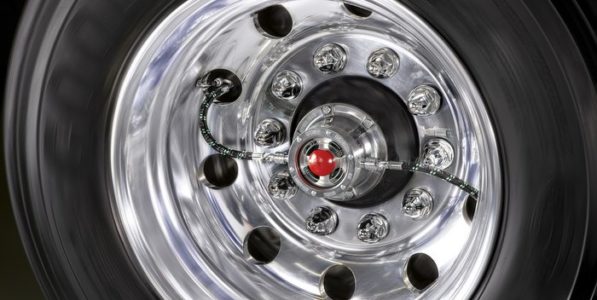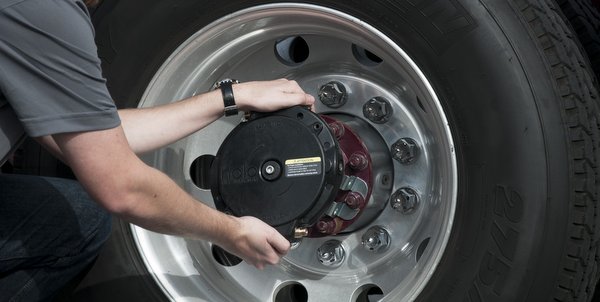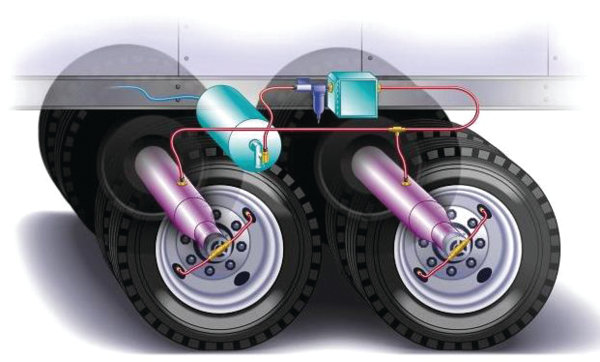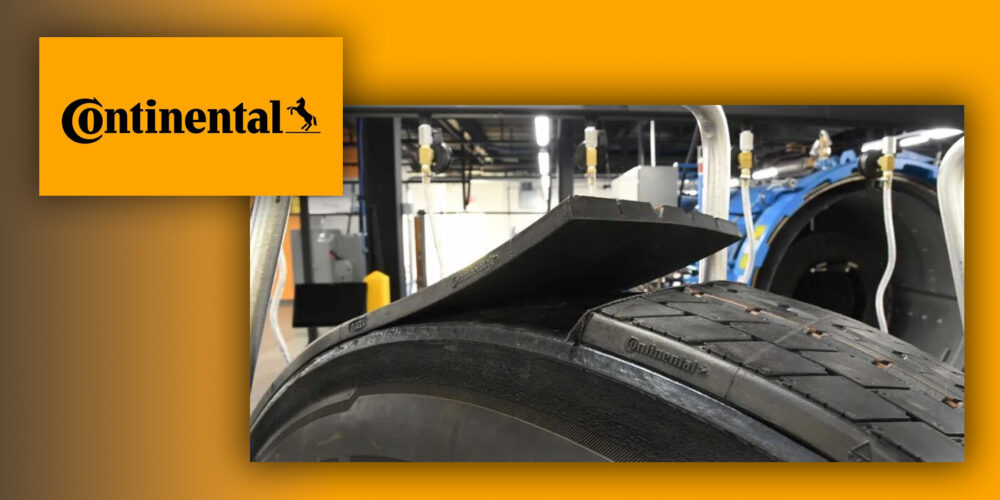Hargrave says, “Traditionally, our TPMS units have provided the problem solving performance information. Today, our advanced TPMS+ solutions allow programs to be predictive instead of reactive. Everything is in data. If you can’t measure the effectiveness and performance of your tires you can’t improve.”
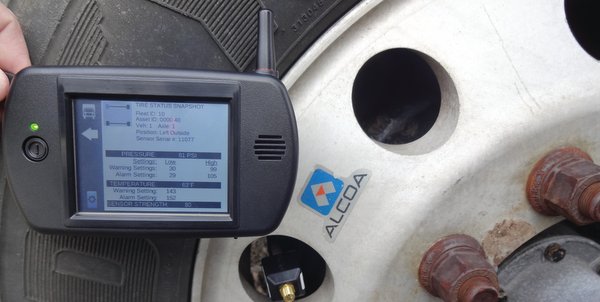 Zach Rothstein, marketing coordinator, Mobile Awareness LLC, notes, “The biggest difference between ATIS and TPMS is that the tire inflation system creates the action, while the tire pressure monitoring system provides the information necessary to take action. A tire inflation system is a convenient short-term fix for a loss of pressure, but it doesn’t give you the information that a TPMS would. A tire pressure monitoring system is a better long-term solution by providing the data to analyze tire performance, but it doesn’t add air to your tire when there is a loss of pressure.”
Zach Rothstein, marketing coordinator, Mobile Awareness LLC, notes, “The biggest difference between ATIS and TPMS is that the tire inflation system creates the action, while the tire pressure monitoring system provides the information necessary to take action. A tire inflation system is a convenient short-term fix for a loss of pressure, but it doesn’t give you the information that a TPMS would. A tire pressure monitoring system is a better long-term solution by providing the data to analyze tire performance, but it doesn’t add air to your tire when there is a loss of pressure.”
Brent Fitch, director of Fleet Sales, WABCO North America, states, “Tire inflation systems maintain a preset tire PSI by inflating the tires while in motion. Tire inflation systems keep the wheels inflated but can lead to excess air system usage as the system constantly compensates for tire air loss.” He adds, “A monitoring system or TPMS, like WABCO’s IVTM system, constantly monitors tire pressure and warns the driver on pressure loss. WABCO has a TPMS system called Integrated Vehicle Tire Monitoring System (IVTMS), which includes pressure sensors, an electronic control an (ECU), and an in-cab display. Our solution is differentiated through our wheel stud mounted sensors. Carriers should make sure the robustness of the TPMS system matches the application of their fleet.”
More differentiators
System differences include the amount of data that is provided to the fleet and driver, the complexity of the integration onto the fleet’s equipment as well as if the system can actively correct an inflation problem on the road, says Alexander Chmiel, director of marketing commercial vehicle tires for Continental Tire the Americas LLC. “How the data is provided to the fleet or driver is one of the most important aspects of any system because no matter what system is on the truck if there is creeping air loss the driver will need to be notified enabling them to correct the problem. Only through proper usage of the systems can a fleet optimize up-time and decrease roadside costs.”
Fred Andersky, Bendix director, customer solutions—controls, agrees that monitoring systems essentially measure tire pressure and, in some cases, temperature and provide information along with driver alerts. However, he says, “Key differences among monitoring systems include things like sensor placement and capabilities. Bendix’s SmarTire TPMS, for instance, mounts sensors inside the tire, directly on the wheel. This wheel-mounted sensor enables direct measurement of both pressure and temperature, and gives the system the ability to provide earlier warnings by taking into consideration the changes in temperature and pressure during normal vehicle operation.”
Josh Carter, chief executive officer and co-founder Aperia Technologies, contends, “Tire pressure monitoring systems are limited to providing a notification of a tire inflation problem, whereas automatic tire inflation systems will actively combat the problem by putting air back in the tire. Combining the two technologies by adding a monitoring package to an inflation system can enable better insight into a leak being addressed by an inflation system while also helping drive intervention when severe punctures need service to prevent catastrophic tire failure.”
To optimize tire life and reduce replacement costs, Carter suggests that fleets consult their tire manufacturer to select an optimal tire model based on the dynamics of their specific operation (loads, region, vehicle configuration, typical speeds, etc.). The next step to maximizing tread/casing life and retreadability lies in maintaining the recommended tire pressure.
TPMS advice
Meritor senior product manager, John Morgan, said, “When choosing an ATIS, look for simplicity (which can correlate to reliability). Consider ease of service, too. Virtually all ATIS designs have some moving parts that can eventually require servicing.”
Conti’s Chmiel, adds, “When fleets are considering a system to proactively assist in managing inflation they need to look at their actual needs. Is there a specific problem? Where does the fleet operate and in what service conditions? Do they want the data on only the power unit’s inflation or also on trailer tires? All of these will have an impact on what system is best.”
Stemco’s Steph suggests paying attention to the wheel-end and asking suppliers how the system will affect seals, bearings and lubricant in the wheel end. Also consider ongoing annual costs for a specific system and field support for technicians. Find out how much will it cost to maintain the system and how available is support in the field when problems arise.
Calculating ROI?
As for return on investment (ROI), Morgan says that the typical experience is that fleets realize payback on their investment in ATIS within the first year of ownership.
(Click “Next Page” to continue reading the story.)

